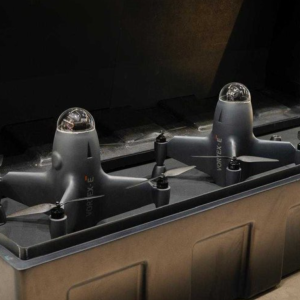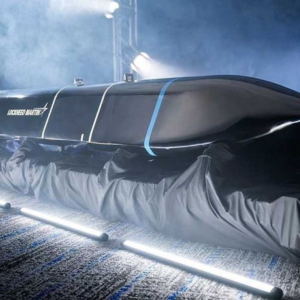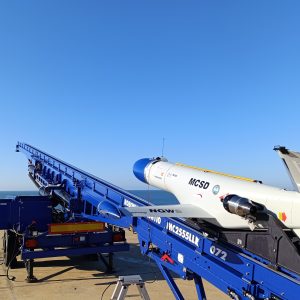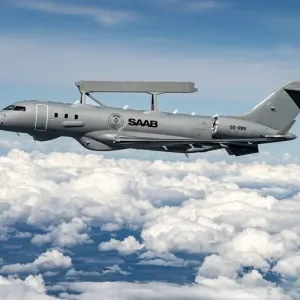
Assured Space Access Technologies Inc has unveiled the CapLink Array, a next‑generation phased‑array antenna engineered to raise the performance ceiling in missile defense and space communications. Built around a proprietary capacitive‑dipole architecture, the system targets broad instantaneous bandwidth, high gain, and a wide field‑of‑view—the core attributes that enable faster track initiation, multi‑target handling, and resilient high‑throughput links. The company positions the CapLink Array missile defense solution as an integration‑friendly upgrade for radar, surveillance, and multi‑orbit satcom missions.
Key Facts
- Architecture: capacitive‑dipole phased array with active beamforming and polarization diversity
- Throughput: up to 3.5 Gbps baseline; higher rates possible with advanced ground infrastructure
- Mission set: missile defense radar, ground surveillance vs. ballistic and hypersonic threats, SAR imaging, orbital‑debris tracking, high‑speed satcom
- Compatibility: software‑defined radios (SDR) and modern C2 interfaces
- Footprint: designed for modular scaling and platform flexibility (ground, maritime, and LEO/MEO/GEO gateways)
What the CapLink Array changes—and why it matters
Modern integrated air and missile defense hinges on two levers: seeing each threat early and maintaining fire‑control‑quality tracks through the engagement envelope. Agile phased arrays achieve both by steering beams electronically, executing rapid search–track–discriminate cycles, and supporting simultaneous tasking. These attributes underpin systems such as the U.S. Navy’s SPY‑6 family and NATO’s IAMD posture[1][2]. The CapLink Array missile defense concept brings similar principles to a modular, SDR‑ready form factor aimed at ground radar, fixed sites, and gateway terminals.
The company cites a proprietary capacitive‑dipole design to extend bandwidth and field‑of‑view while preserving element‑level efficiency. Wideband behavior matters: it supports multi‑mission roles—from L/S‑band surveillance to X/Ku/Ka‑band communications—without swapping hardware, and it improves clutter mitigation and target discrimination in complex environments. Research from MIT Lincoln Laboratory and others has long shown that wideband arrays and digital beamforming raise scan speed, resolution, and polarization control for concurrent missions like weather sensing and aircraft surveillance[3][4].
“This technology represents a major step forward for both defense and commercial space operations. By combining advanced engineering with flexible design, CapLink Array delivers unmatched versatility and reliability to missions that demand precision, speed, and resilience.”Sean McDaniel, President and CEO, Assured Space
Missile defense applications: from ballistic to hypersonic
Ballistic and hypersonic threats stress existing radar networks with speed, altitude, and maneuver. Phased arrays counter these challenges through beam agility, multi‑beam operation, and discrimination at long range. The CapLink Array missile defense profile—multi‑target tracking, high update rates, polarization diversity—maps to the functions demanded by layered architectures described in Missile Defense Agency materials and NATO IAMD policy[1][2][5]. Elevated sensors and networked arrays are also central to contemporary concepts for tracking low‑altitude and hypersonic threats[6][7].
In practical terms, the array’s wide field‑of‑view and high gain enable track custody on complex raids, while polarization diversity helps mitigate scintillation and aspect‑angle effects. When paired with SDRs and open C2, the system can ingest cueing from external sensors and contribute to composite tracks. That supports faster shooter–sensor pairing and improves defended‑asset coverage without wholesale changes to command systems.
How bandwidth translates to effects
Bandwidth impacts radar waveform agility and satcom throughput. On the radar side, wider instantaneous bandwidth enables longer coherent processing intervals and better range resolution. On the communications side, Ka‑band and advanced coding/modulation unlock multi‑hundred‑megabit to multi‑gigabit links—rates validated in NASA Ka‑band programs and cognitive communications demos[8][9][10]. The 3.5 Gbps baseline cited for CapLink sits within today’s high‑end ground‑to‑space systems and can climb with improved ground infrastructure.
Satcom and SDR integration: toward resilient, zero‑trust 5G
Because the CapLink design is SDR‑compatible, operators can field a common hardware layer and evolve capabilities in software—switching between narrowband TT&C, wideband ISR backhaul, or tactical 5G waveforms with over‑the‑air updates. Architecturally, this aligns with zero‑trust principles now mandated across federal networks and recommended for defence communications, where identity‑driven access and micro‑segmentation replace implicit trust[11][12]. The company’s Florida‑based Phased Array Center of Excellence aims to accelerate this convergence of RF, software, and security at production scale.
From lab to field: proven building blocks
Phased arrays matured in laboratories that demonstrated digital beamforming, dual‑polarization, and multifunction operation. Lincoln Laboratory’s MPAR panel and related work documented how electronically steered arrays replace gimballed dishes, deliver 360° coverage with tiled faces, and execute concurrent missions with rapid resource management[3][4]. Today’s naval SPY‑6 family brings that paradigm to sea with scalable radar modules and GaN technology, defending against ballistic, cruise, and emerging hypersonic threats[13][14][15]. CapLink follows this trajectory on the ground and in gateways: modular panels, polarization agility, and SDR‑level reconfigurability.
Industrial strategy: addressing a $30 billion backlog
The system’s debut coincides with investment in a Phased Array Center of Excellence in Melbourne, Florida, intended to shorten lead times for RF apertures, advanced antenna panels, and secure 5G architectures. Defence and commercial programs face multi‑year backlogs across radar, satcom terminals, and network gear. Concentrating design, test, and manufacturing under one roof helps de‑risk schedules and scale deliveries. It also enables tighter iteration cycles between mission engineering and production—vital for programs responding to fast‑evolving threat sets.
Market outlook and NATO‑aligned use cases
NATO’s latest Integrated Air and Missile Defence policy underscores all‑domain sensing and layered intercepts from ground to space[2]. A deployable, wideband, polarization‑diverse array that pairs cleanly with SDRs aligns with that direction. Beyond missile warning and fire control, the same hardware can support synthetic aperture radar experiments, orbital‑debris tracking, and sovereign gateway nodes for allied satcom constellations. For industry, the value proposition is a common aperture that services multiple revenue streams without bespoke hardware for each band or mission.
For deeper strategic context on funding cycles, technology vectors, and alliance priorities, see our overview of defence and aerospace strategic trends and how sensors, networks, and software are redefining market leadership. The CapLink Array missile defense pathway fits squarely within those dynamics.
Conclusion: a software‑defined aperture for contested domains
CapLink’s proposition is straightforward: combine a wideband, polarization‑agile aperture with SDR‑based control to deliver radar‑grade sensing and satcom‑class throughput from one array. If field performance matches the design intent, operators gain faster tracks, better raid handling, and resilient multi‑gigabit links—the ingredients that enable credible layered defence and assured space access. With NATO partners hardening IAMD architectures and commercial constellations expanding, a versatile phased array that scales across missions and bands is not just useful—it is necessary.
References
- Navy Fact File — Aegis Weapon System (AN/SPY family overview). Link.
- NATO — Integrated Air and Missile Defence (IAMD) Policy, 13 Feb 2025. Link.
- MIT Lincoln Laboratory — Multifunction Phased Array Radar (MPAR) panel tech note. Link.
- MIT Lincoln Laboratory — The development of phased‑array radar technology. Link.
- DoD — Ballistic Missile Defense System factsheet (MDR). Link.
- CSIS — Space and airborne sensors for hypersonic missile defense. Link.
- CSIS — Complex Air Defense: Countering the Hypersonic Missile Threat. Link.
- NASA — Ka‑band represents the future of space communications. Link.
- NASA NTRS — Evolving Ka‑band network capabilities (2022 paper). Link.
- NASA NTRS — Bandwidth‑efficient Ka‑band communications experiments. Link.
- NIST — Special Publication 800‑207: Zero Trust Architecture. Link.
- NIST CSRC — Zero Trust Architecture (landing page). Link.
- U.S. Navy — AN/SPY‑6(V)1: Eyes of the Fleet (NSWCDD). Link.
- NAVSEA — AN/SPY‑6 Air & Missile Defense Radar overview (RMA concept). Link.
- U.S. Navy — DDG‑51 Flight III and SPY‑6 integration. Link.
Further Reading
- Defence & Aerospace Strategic Trends (internal)
- NATO — Integrated Air and Missile Defence (topic)
- DON CIO — The Aegis Combat System
Editorial note: This article uses only trusted sources (DoD/Navy, NATO, NIST, NASA, MIT Lincoln Laboratory, CSIS) to provide technical and strategic context. Replace the featured image with a visual from the original news source to comply with site policy.
Internal link: Strategic trends explainer (see above). External links: NATO, U.S. Navy, NIST, NASA, MIT LL, CSIS.












